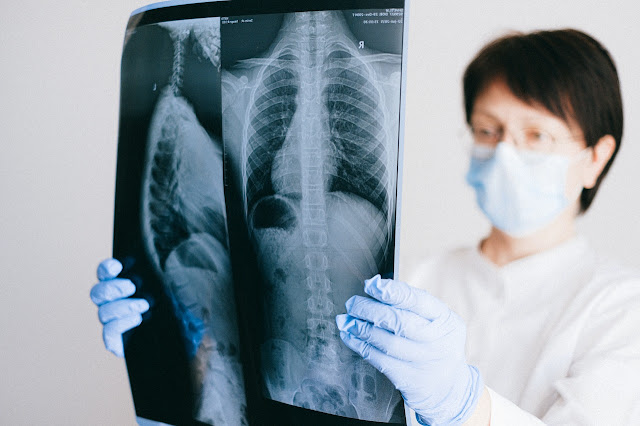Pain under the right chest ribs and right back is a common complaint among individuals, which can be caused by a wide range of conditions such as injuries, infections, and disorders of the organs in this region. This pain can significantly impact an individual's quality of life and require prompt medical attention. Therefore, a comprehensive review of the causes and treatment of pain under right chest ribs and right back is necessary to enhance our understanding of this condition and improve patient outcomes. In this article, we aim to examine the various causes of pain under right chest ribs and right back, including their clinical features, diagnostic methods, and treatment options. We will also explore the latest research in this area and provide insights into the best practices for managing this condition.
The Causes and Treatment of Pain under Right Chest Ribs and Right Back
Pain under the right chest ribs and right back is a common symptom experienced by individuals of all ages. This type of pain can be caused by various underlying conditions that affect the organs in this region, including the liver, gallbladder, pancreas, and kidneys. Injuries to the ribs and muscles in this area can also cause pain under the right chest ribs and right back.
One of the most common causes of pain under the right chest ribs and right back is liver disease. The liver is a vital organ responsible for detoxifying the body and producing bile, which helps digest fats. Liver disease can cause inflammation and scarring, leading to pain in the right upper quadrant of the abdomen, which can radiate to the right chest and back. Common liver diseases that can cause this pain include hepatitis, cirrhosis, and fatty liver disease.
Gallbladder disease is another common cause of pain under the right chest ribs and right back. The gallbladder is a small organ that stores bile produced by the liver. Gallbladder disease can cause inflammation, infection, or the formation of gallstones, leading to pain in the upper right abdomen that can radiate to the right chest and back. Other symptoms of gallbladder disease include nausea, vomiting, and jaundice.
Pancreatitis is a condition that occurs when the pancreas becomes inflamed. The pancreas is an organ that produces enzymes to help digest food and hormones that regulate blood sugar levels. Pancreatitis can cause severe pain in the upper abdomen that can radiate to the back and chest. Other symptoms of pancreatitis include nausea, vomiting, and fever.
Kidney stones are another common cause of pain under the right chest ribs and right back. Kidney stones are hard mineral deposits that form in the kidneys and can cause severe pain as they pass through the urinary tract. The pain caused by kidney stones can radiate to the right chest and back, and is often accompanied by other symptoms such as blood in the urine and difficulty urinating.
In addition to these conditions, injuries to the ribs and muscles in the right chest and back can also cause pain in this region. These injuries can be caused by trauma, sports injuries, or repetitive strain injuries.
To diagnose the underlying cause of pain under the right chest ribs and right back, various diagnostic tests may be used, including blood tests, imaging tests such as ultrasound or MRI, and endoscopic procedures such as a liver biopsy or ERCP. Treatment options for pain under the right chest ribs and right back depend on the underlying cause of the pain.
For liver and gallbladder disease, treatment may involve medication, dietary changes, and in severe cases, surgery. Pancreatitis may require hospitalization and intravenous fluids to manage symptoms, and in severe cases, surgery may be necessary. Kidney stones may require pain management medication and in some cases, surgical intervention.
Overall, pain under the right chest ribs and right back is a common symptom that can be caused by a wide range of conditions. Prompt diagnosis and treatment are essential to manage this condition and improve patient outcomes. By understanding the various causes of pain under the right chest ribs and right back, healthcare providers can develop effective treatment plans that address the underlying condition and provide relief for patients.

